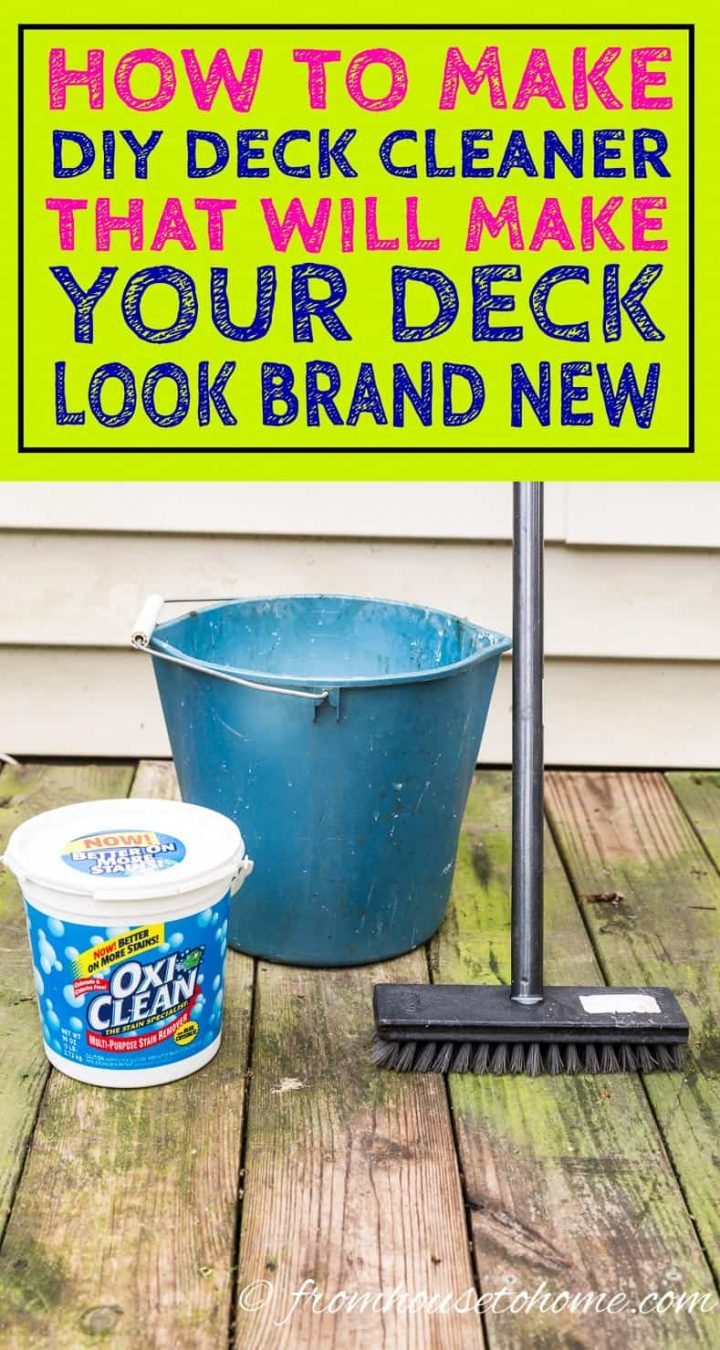Effectively cleaning your deck doesn't always require expensive commercial products. DIY solutions can be both potent and more environmentally friendly.
Essential Safety Precautions
- Protective Gear: Always wear waterproof gloves, eye protection (goggles), and old clothing that can be stained.
- Test Area: Before applying any solution to the entire deck, test it on a small, inconspicuous area to check for discoloration or damage to the wood.
- Mixing Chemicals: Never mix chlorine bleach with ammonia-based cleaners or vinegar. This combination produces dangerous toxic gases. For wood, oxygen bleach is generally a safer alternative to chlorine bleach.
- Ventilation: Work in an open, well-ventilated area.
- Plant Protection: Wet down or cover nearby plants and grass with plastic sheeting before you start and rinse them thoroughly after you've finished cleaning the deck.
Effective DIY Deck Cleaner Recipes
1. Gentle Cleaner for Regular Maintenance
This solution is ideal for light dirt, dust, and general upkeep.
- Ingredients:
- 1 gallon of warm water
- 1/4 cup of mild liquid dish soap (choose one without bleach or harsh degreasers)
- Instructions: Combine ingredients in a bucket. Stir gently to mix without creating excessive suds.
2. Oxygen Bleach Cleaner for Mold, Mildew, and Algae
Oxygen bleach (sodium percarbonate) is effective against organic stains and is less harsh on wood and plants than chlorine bleach.

- Ingredients:
- 1 gallon of warm water
- 1 cup of powdered oxygen bleach (e.g., OxiClean or generic sodium percarbonate)
- Optional: 1/4 cup of liquid dish soap (helps the solution adhere to the surface)
- Instructions: In a bucket, dissolve the oxygen bleach completely in warm water. If using, add the dish soap. Let the mixture sit for 10-15 minutes to allow the oxygen bleach to activate. Stir again before use.
3. Vinegar Solution for Mildew (Use with Caution)
White vinegar can help with mildew, but its acidity can be harsh on some wood types over time. Always test thoroughly.
- Ingredients:
- 1 gallon of warm water
- 1 cup of white distilled vinegar
- Instructions: Mix well in a bucket. Avoid using on cedar or redwood unless you have tested extensively, as it can sometimes darken these woods.
Application and Cleaning Process
- Preparation: Sweep the deck clear of all loose debris, leaves, and dirt. Remove furniture and other items.
- Apply Cleaner: Using a garden sprayer, deck brush, or mop, apply your chosen DIY cleaning solution generously to the deck surface. Work in manageable sections, especially on large decks, to prevent the solution from drying prematurely.
- Dwell Time: Let the cleaner sit on the surface for 10-20 minutes (refer to recipe notes, especially for oxygen bleach). Do not allow it to dry completely. If an area starts to dry, lightly mist it with more solution or water.
- Scrub: For stubborn stains or heavily soiled areas, use a stiff-bristled deck brush (non-metallic bristles are best to avoid scratching). Scrub in the direction of the wood grain.
- Rinse Thoroughly: Rinse the deck completely with a garden hose, starting from the highest point and working downwards. Ensure all cleaning residue is washed away. A pressure washer on a low setting (600-800 PSI for softwoods, up to 1200 PSI for hardwoods, using a fan tip and keeping the nozzle moving) can be used, but exercise caution to avoid damaging the wood fibers.
- Dry: Allow the deck to dry completely, which may take 24-48 hours depending on weather conditions, before replacing furniture or applying any sealers or stains.
Important Considerations
- Wood Type: Softwoods like pine and cedar are more prone to damage from harsh chemicals or high-pressure washing than hardwoods like ipe or teak. Always adjust your cleaning method and solution accordingly.
- Re-Sealing: Cleaning can strip away some of the deck's protective sealer. After the deck is thoroughly clean and dry, consider applying a quality deck sealer or stain to protect it from moisture, UV rays, and future grime.
- Frequency: Annual cleaning is generally recommended, but this may vary based on your climate and the deck's exposure to elements.










